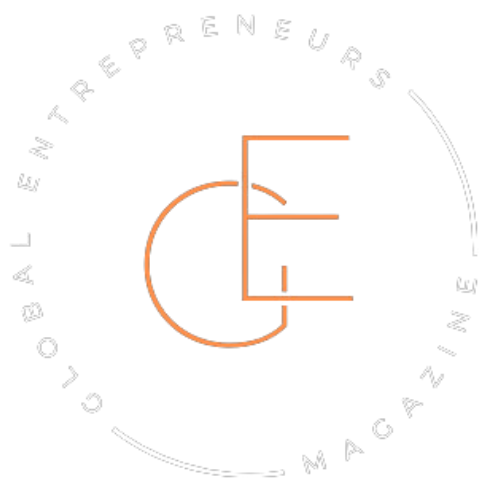They launched within weeks of each other. Same industry. Same product category. Practically the same target audience. One of them is now quietly thriving—expanding, hiring, picking up loyal customers every month. The other? Still stuck. Still scrambling for clicks, still tweaking ads, still wondering why nothing sticks.
It’s a story that plays out more often than you’d think. From the outside, it looks like one of them got lucky. Or maybe had better funding. Or a stronger team. But if you zoom in, the difference had nothing to do with luck—or even the product.
It came down to one decision. A shift that changed how they showed up, how they communicated, and how people responded.
We’ll get to that in a moment. But first, let’s talk about what so many businesses keep getting wrong.
The mistake most businesses keep repeating
It usually starts with urgency. You need traffic. You need customers. So you do what everyone else seems to be doing—boost a post, run an ad, throw in a promo code. Maybe it works for a little while. Enough to get a few sales, enough to feel like you’re on the right track.
Then it stalls.
So you tweak the offer. Refresh the graphics. Try a different audience. And once again, you’re chasing a blip of attention, hoping it turns into something more.
But it never really does.
This is where so many businesses get stuck. They rely on tactics meant for short-term wins without asking the bigger question: what are we actually building here?
Attention is cheap. Loyalty isn’t. And when your entire marketing strategy is built around spikes instead of consistency, you end up with noise—loud, brief, forgettable.
The businesses that struggle tend to repeat this loop: launch something, promote it hard, wait for results, then scramble when nothing sustainable shows up. What they’re missing isn’t effort. It’s direction.
What growing businesses figured out early
They stopped trying to be everywhere and focused on being remembered.
Instead of chasing every trend or platform, they picked one thing: showing up with something valuable to say. Not polished sales copy. Not flash-in-the-pan hooks. Just honest content built on a clear point of view.
They understood that marketing isn’t about constantly convincing people to buy. It’s about helping them care first.
The businesses that grow tend to invest in trust. They create content that actually helps, stories that resonate, and messages that feel like they’re written by a human—not a brand playbook. They treat attention as something earned, not paid for.
It’s not glamorous in the beginning. But it compounds. And eventually, their audience starts to seek them out—not because they shouted the loudest, but because they made the most sense.
The shift: from noise to narrative
This is where things start to change. The businesses that grow make one quiet, powerful move—they stop shouting and start telling a story.
They stop flooding feeds with product shots and start creating content people actually want to engage with. Not because it’s flashy, but because it’s real. Consistent. Familiar.
They choose a narrative and stick to it. That might be the founder’s journey. Or a deep understanding of their audience’s frustrations. Or a simple belief that keeps showing up in every post, every email, every video.
And over time, that narrative starts doing the heavy lifting. It builds trust before the first sale. It keeps customers coming back even when competitors offer discounts. It makes the brand feel less like a company and more like a person worth listening to.
That’s the shift. From trying to get attention—to earning it.
What this looks like in real life
Take a small-town gym owner who got tired of running seasonal promos no one cared about. Instead, she started posting five-minute videos every week—simple tips on form, nutrition, and staying motivated. No fancy edits. No sales pitch. Just her voice, her knowledge, and her personality. Six months in, she wasn’t just filling classes. She had a waitlist.
Or the consultant who stopped chasing cold leads and launched a podcast instead. He didn’t script it to sound perfect. He spoke like he would to a client—straightforward, curious, sometimes even unpolished. But the right people started listening. Then sharing. Then hiring.
These stories don’t go viral. They don’t explode overnight. But they grow. Slowly, steadily, and with the kind of loyalty paid ads can’t buy.
That’s what happens when the story clicks—and keeps showing up.
Why struggling businesses hesitate to make this shift

It feels slow. That’s the first reason. When you’re used to chasing instant clicks and short-term spikes, showing up consistently with no guaranteed payoff feels risky.
And then there’s the fear of not being interesting enough. What if no one cares? What if you post and it flops? What if your story doesn’t sound as polished or exciting as everyone else’s?
So instead of building something steady, many businesses keep chasing the next tactic. A new ad format. A trending sound. A fresh logo. Anything but the work of showing up, saying something honest, and giving it time.
But this is where most of the difference lies—not in talent, not in budget, but in patience and clarity. The businesses that grow are the ones that are willing to be consistent before they’re popular.
A simple way to start making the shift
Pick one place. One message. One format you can stick with.
You don’t need a full content calendar or a team of editors. You need a voice—and the willingness to use it regularly. That could mean writing weekly emails. Posting behind-the-scenes updates on Instagram. Starting a conversation on LinkedIn. Whatever feels natural enough to keep doing.
The key is to stop thinking in campaigns and start thinking in conversations.
Forget the need to impress. Focus on being clear. Say something useful, or honest, or both. And repeat it often enough that people start to recognize it. That’s when the shift begins—when your audience starts seeing you not as another business, but as the one they actually remember.
Growth follows clarity
When you look back at the businesses that found their stride, it’s rarely because they had the flashiest branding or the biggest launch. It’s because they got clear—about who they were, who they were speaking to, and what they stood for.
They made that one shift. They stopped trying to say everything to everyone. They committed to a message—and kept showing up with it, long after the initial excitement wore off.
That kind of clarity is magnetic. It attracts the right people. It builds something solid. And over time, it becomes the reason customers stick around, even when they’ve got endless options.
So if growth has felt unpredictable, maybe it’s not about doing more. Maybe it’s about saying less, more consistently—and finally being heard.




